There are plenty of fish in the sea, which means you’re bound to see them in a variety of shapes, sizes, and colors. This includes various different types of yellow fish, ranging from those living in freshwater to salt water. Ready to learn about the different types of yellow fish you may encounter out in the wild (or on your next trip to the pet store)? Let’s dive in!
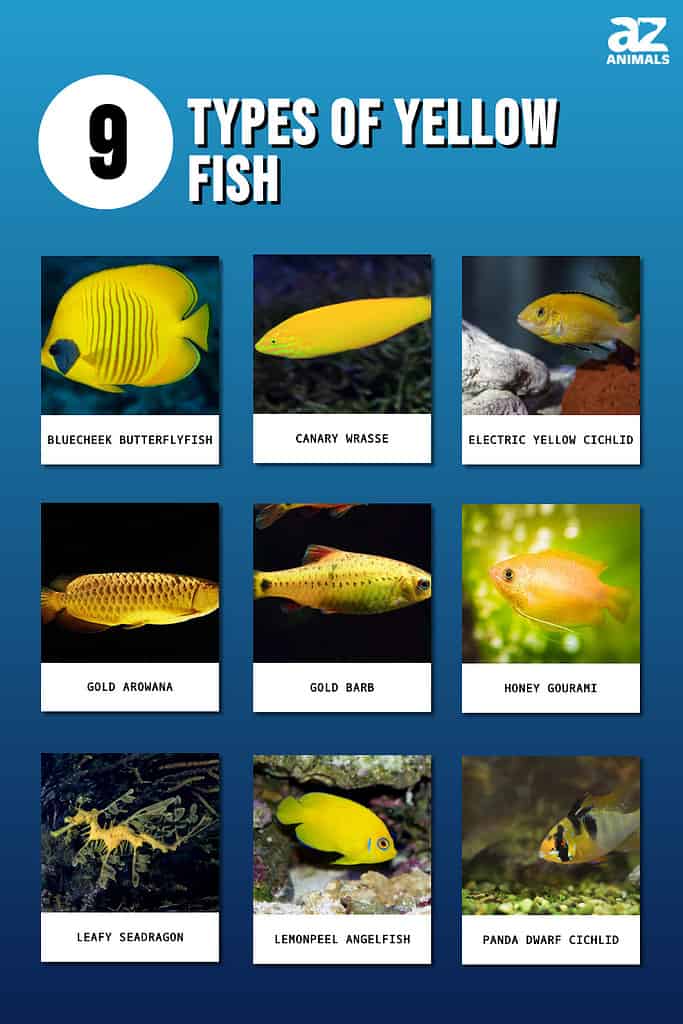
1. Bluecheek Butterflyfish
The bluecheek butterflyfish (Chaetodon semilarvatus) is neither blue nor a butterfly. Instead, it has a bright yellow body with thin red stripes running vertically down its body. Its name comes from the small blue spot located beneath its eyes. The bluecheek butterflyfish is native to the northwestern Indian Ocean.
Interestingly enough, the bluecheek butterflyfish is one of the few fish species around to have long-term mates. While other species of fish may just pair up for the breeding season, bluecheek butterflyfish pairs will often stay together for a long period of time. They are known to group together in these pairs or form larger groups known as shoals.
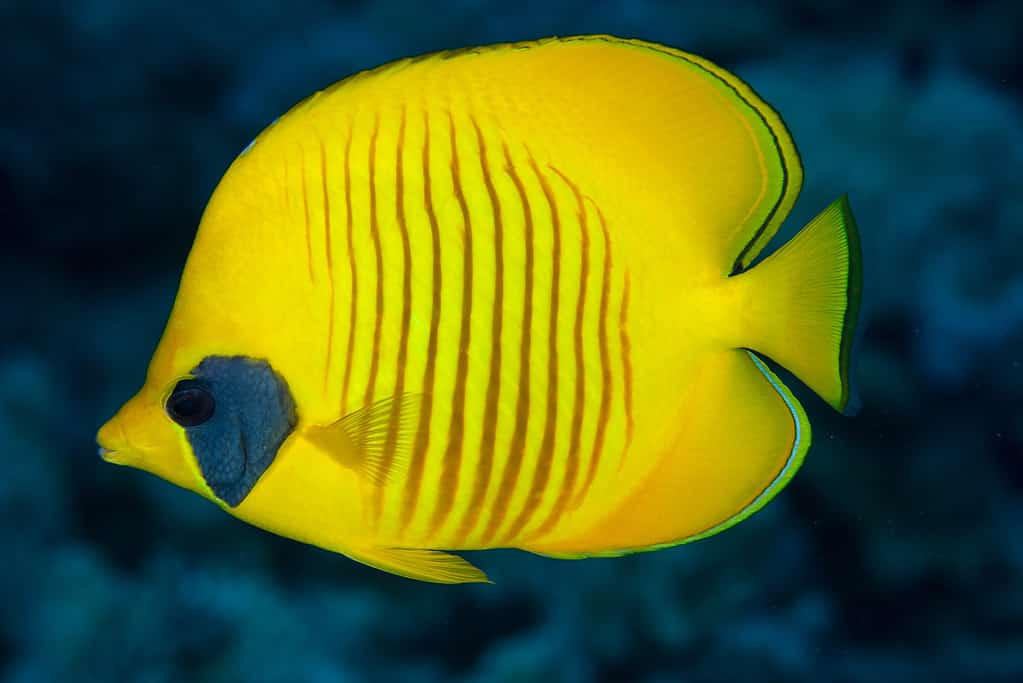
Bluecheek butterflyfish (
Chaetodon semilarvatus).
©Gerald Robert Fischer/Shutterstock.com
2. Canary Wrasse
Also known as the “golden wrasse” or “yellow wrasse,” the canary wrasse (Halichoeres chrysus) is a species of fish native to the central Indo-Pacific Ocean. Males, females, and juveniles sport black spots, although their appearances differ, allowing you to tell male from female.
The canary wrasse is a predator that mainly hunts and eats invertebrates. This includes everything from crustaceans to worms.
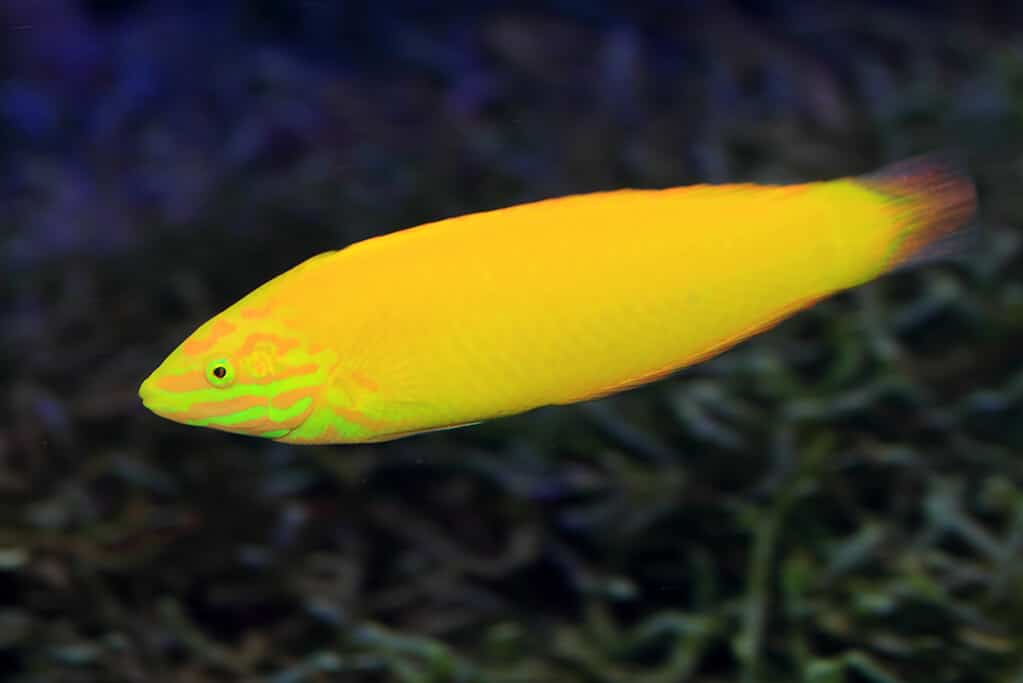
Canary wrasse (
Halichoeres chrysus).
©feathercollector/Shutterstock.com
3. Electric Yellow Cichlid
The electric yellow cichlid (Labidochromis caeruleus) is a rare species of fish endemic to only one area in the world. In the wild, you can only find the electric yellow cichlid in the central western region of Lake Malawi in East Africa. The electric yellow is actually one of many morphs of this species of cichlid.
Like many other types of fish, this cichlid is a mouthbrooder. This means that it carries its eggs in its mouth!
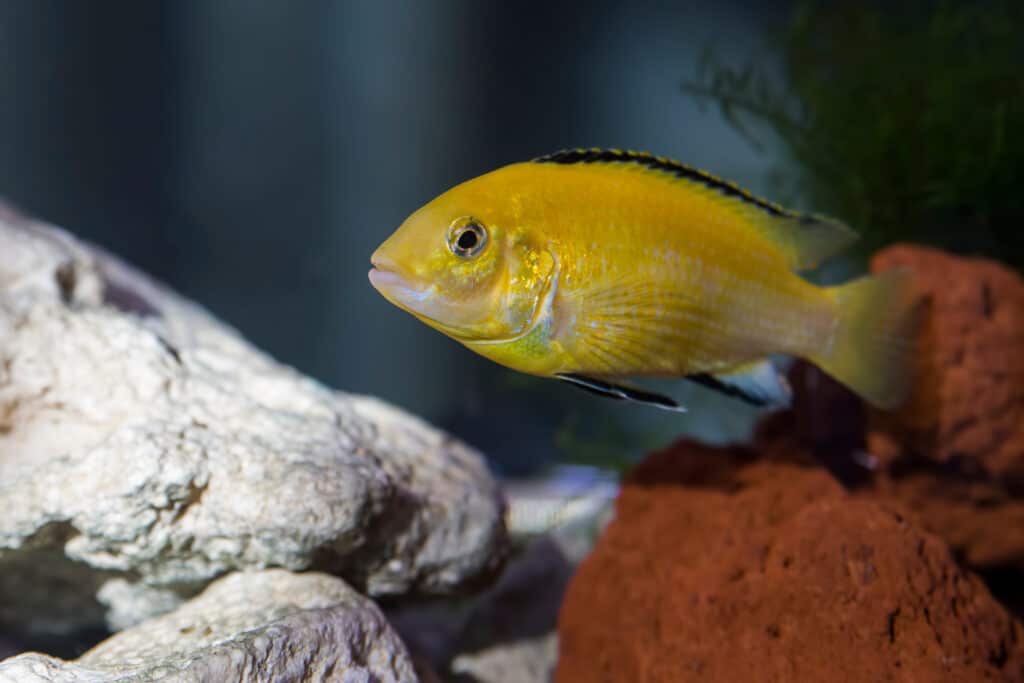
Electric yellow cichlid (
Labidochromis caeruleus).
©Mircea Costina/Shutterstock.com
4. Gold Arowana
The gold arowana is a particular color of the Asian arowana (Scleropages formosus), which can come in many different colors. Also known as the “Asian bonytongue” or the “dragonfish,” each morph of the Asian arowana may have a different name. As one of many types of yellow fish, gold seems to fit this species!
Arowanas are native to blackwater rivers located in the southeastern region of Asia. Gold arowana may also appear to be red, brown, or orange, depending on the lighting.

Gold arowana (
Scleropages formosus).
©Arunee Rodloy/Shutterstock.com
5. Gold Barb
Also known as the “Chinese barb,” the gold barb (Barbodes semifasciolatus) looks like it’s made of gold! This type of yellow fish is one of the most popular morphs of the Chinese barb. It has an omnivorous diet that is made up of invertebrates and plants. A single female can lay as many as 400 eggs! As a result, this popular aquarium fish may not be the best choice for beginner breeders.

Gold barb (
Barbodes semifasciolatus).
©tupulointi/Shutterstock.com
6. Honey Gourami
The honey gourami (Trichogaster chuna) is a type of yellow fish native to India and Bangladesh. It prefers soft (low mineral content) lakes and ponds with dense vegetation. During breeding, males may appear darker in color. This means that they may sacrifice their golden yellow hue for an orange color. There is also a specific variety of honey gourami that is red.
Like betta fish, honey gourami like to build their nests out of bubbles. If you keep one in an aquarium, you may notice them entertaining themselves with this pastime, especially when they’re happy with their living conditions.
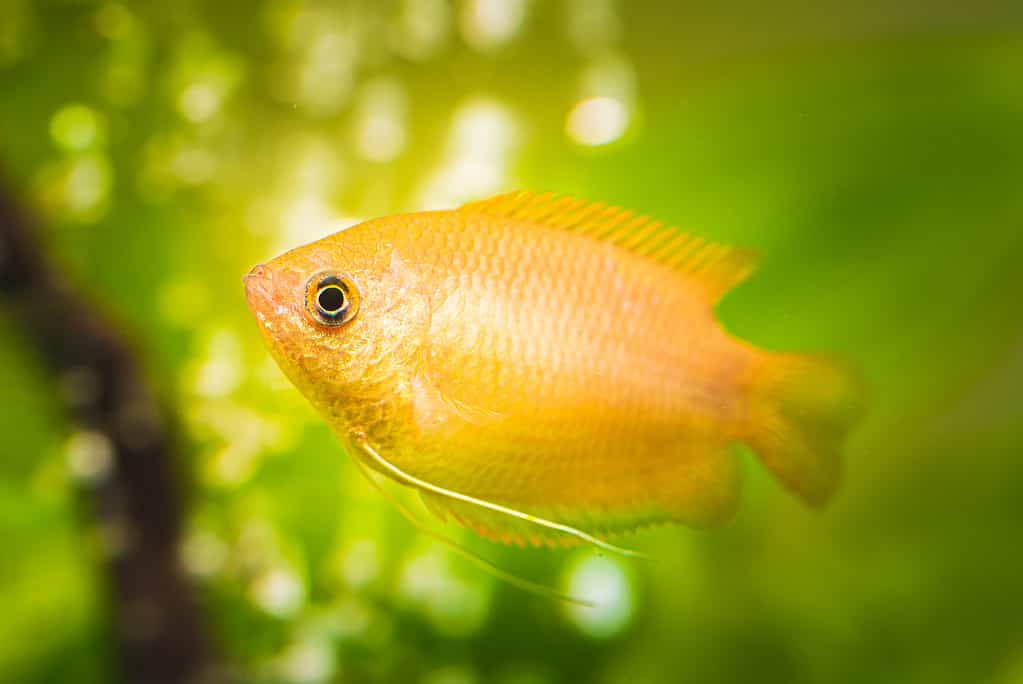
Honey gourami (
Trichogaster chuna).
©Przemek Iciak/Shutterstock.com
7. Leafy Seadragon
Although it may not look like it, the leafy seadragon (Phycodurus eques) is a species of fish. In fact, it’s one of many types of yellow fish!
This fish species is in the same family as other seadragons and sea horses. They are native to Australia. Although their appearance may look strange, it helps them blend into their environment! It is the state symbol for South Australia.
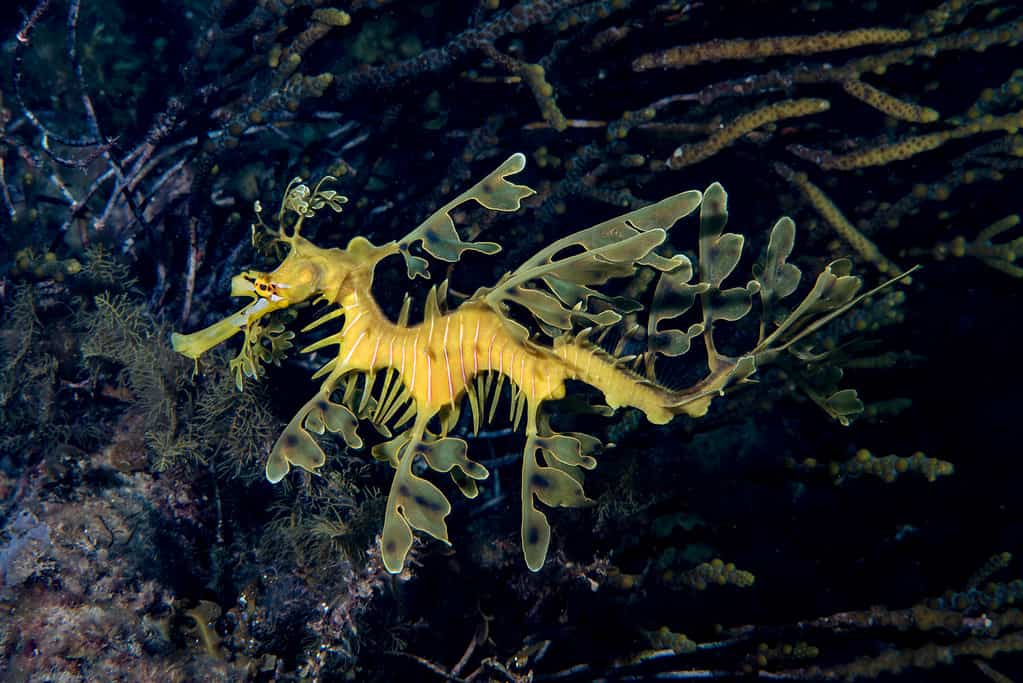
Leafy seadragon (
Phycodurus eques).
©Francesco_Ricciardi/Shutterstock.com
8. Lemonpeel Angelfish
Between its bright yellow scales and neon blue markings, it can be hard to miss the amazing lemonpeel angelfish (Centropyge flavissima). Like many other types of yellow fish, the lemonpeel angelfish is native to the Indo-Pacific region.
In its native habitat, this fish prefers shallow waters rich with seaweed and coral reefs.
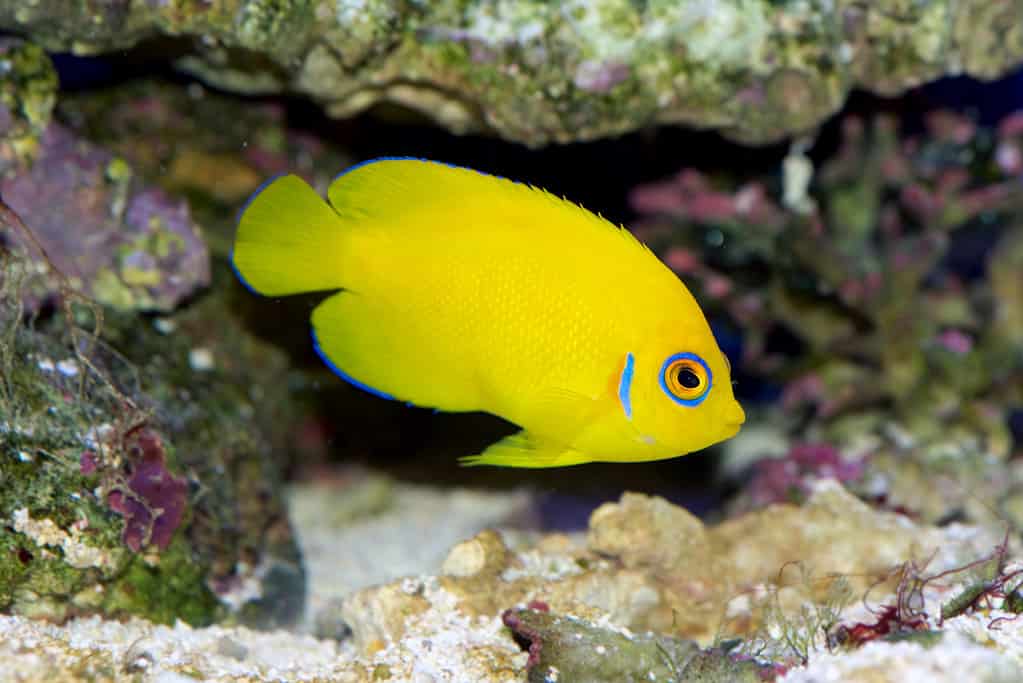
Lemonpeel angelfish (
Centropyge flavissima).
©PAUL ATKINSON/Shutterstock.com
9. Panda Dwarf Cichlid
If you want to add a touch of yellow to your tank while keeping it subtle, the panda dwarf cichlid (Apistogramma panduro/pandurini) is a great option. Yellow alone is an uncommon color for this species. However, you can find them sporting yellow, blue, and red markings together. Some of their most notable markings on their fins and tail are a bright, eye-catching neon yellow.

Panda dwarf cichlid (
Apistogramma panduro/pandurini).
©DMITRII STARTCEV/Shutterstock.com
The photo featured at the top of this post is © aquapix/Shutterstock.com
Thank you for reading! Have some feedback for us? Contact the AZ Animals editorial team.






